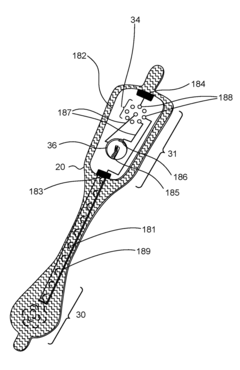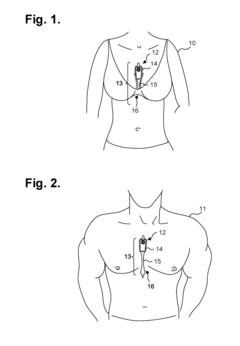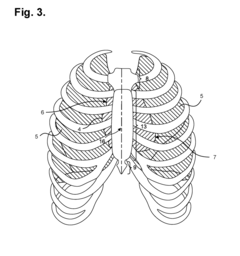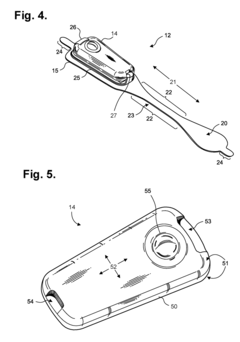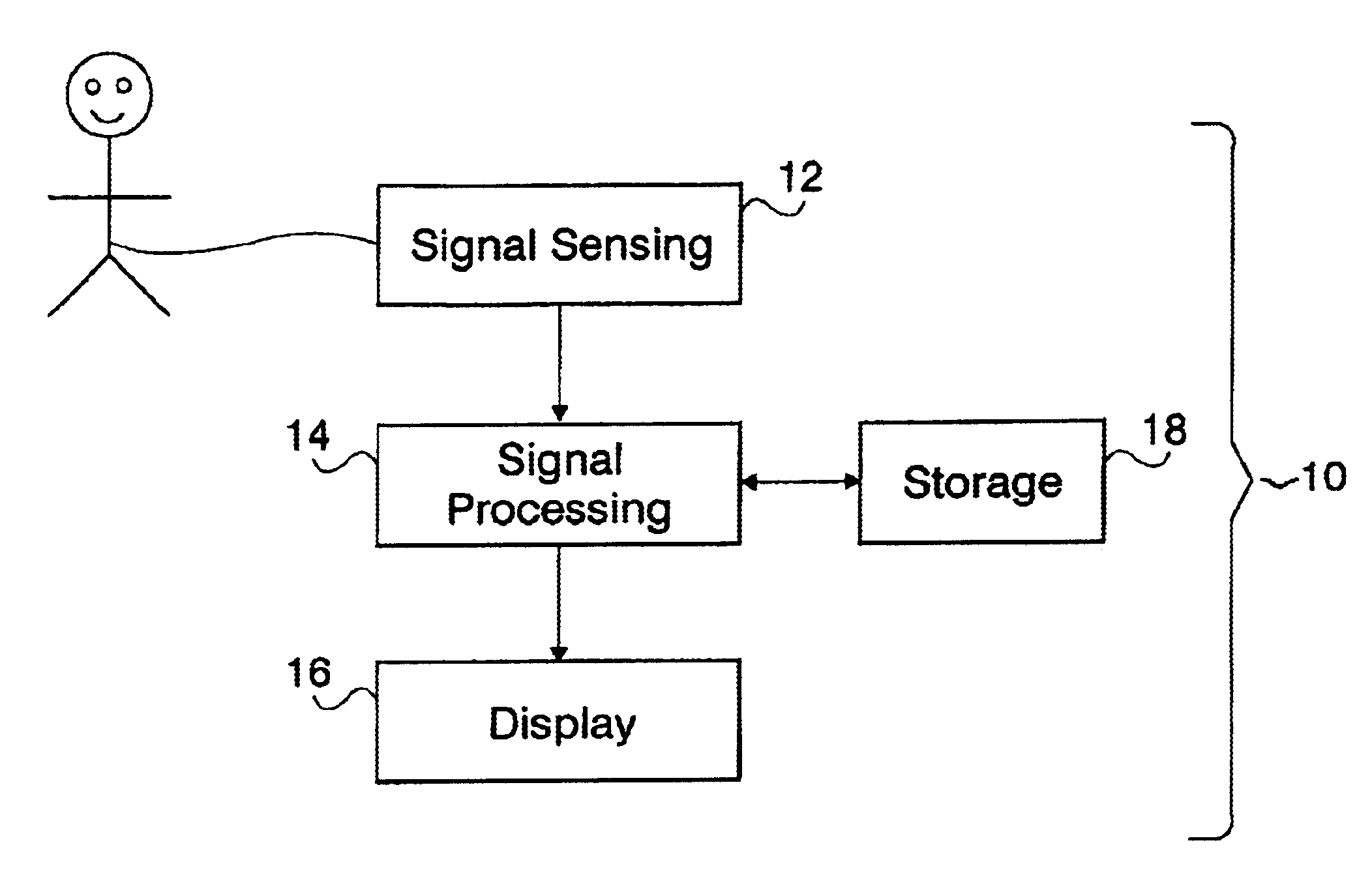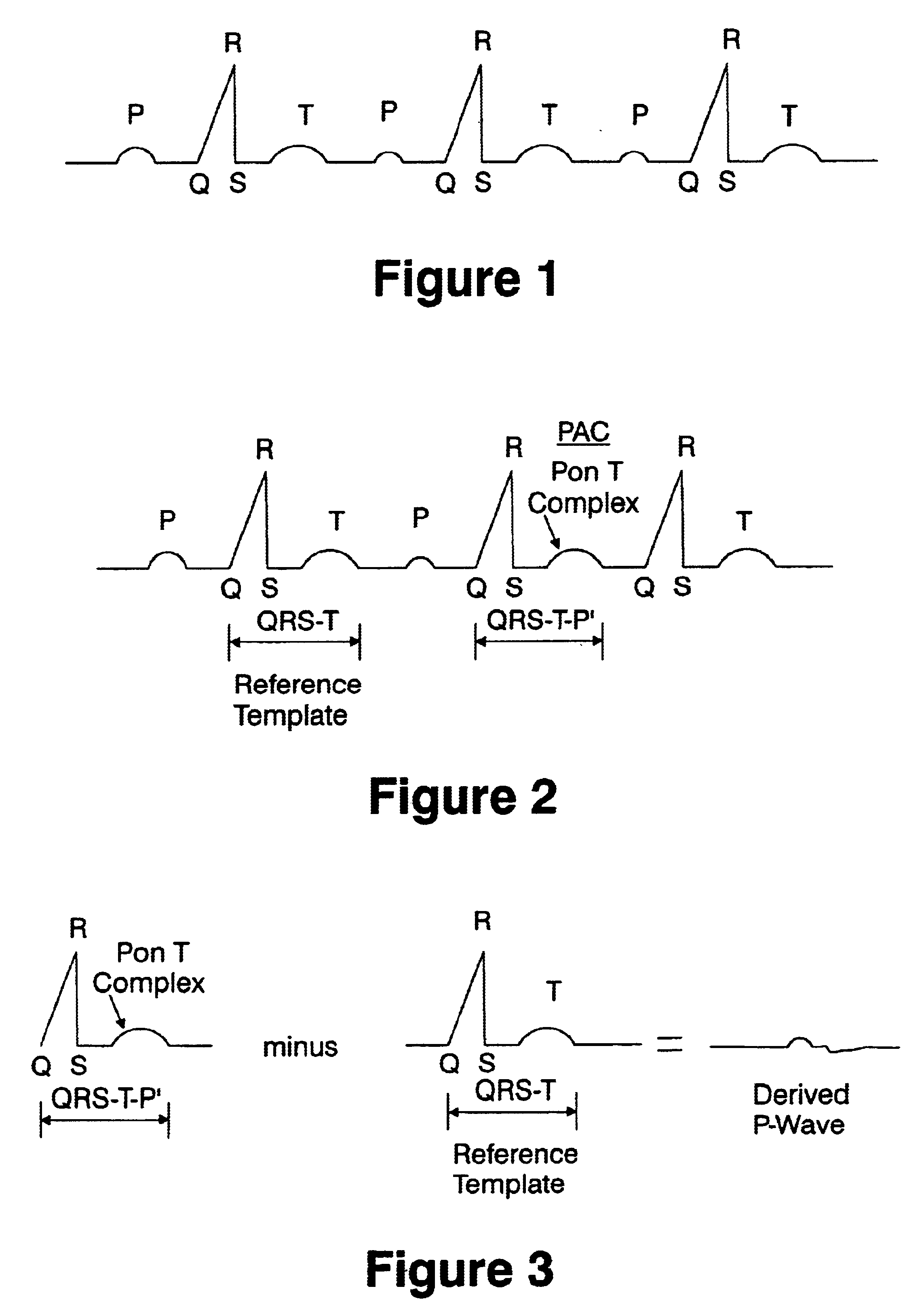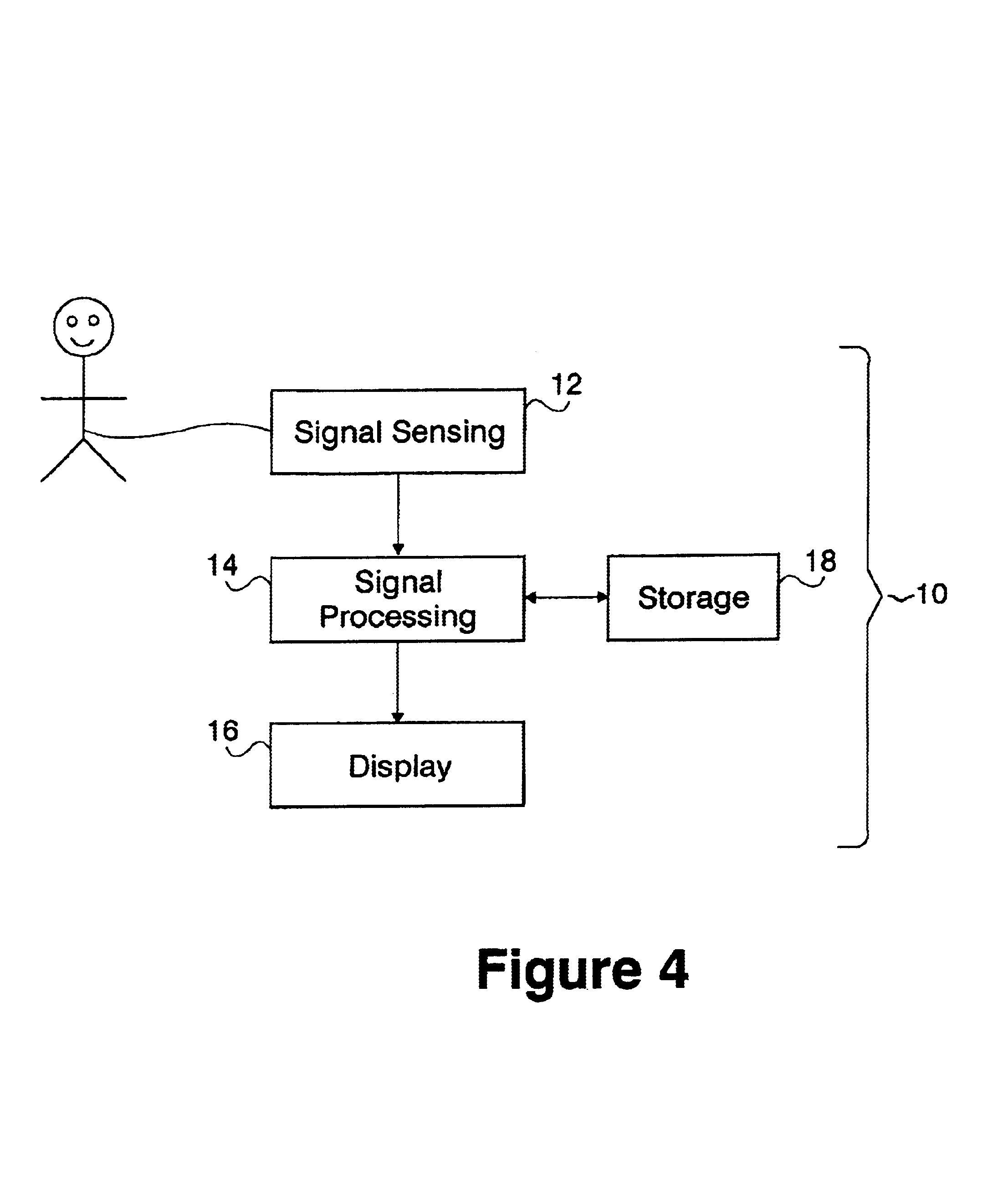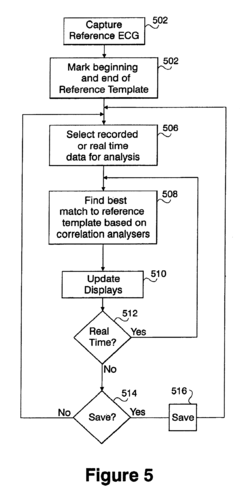P wave and its implications for adolescent cardiac health screening
AUG 19, 20259 MIN READ
Generate Your Research Report Instantly with AI Agent
Patsnap Eureka helps you evaluate technical feasibility & market potential.
P Wave Research Background and Objectives
The P wave, a crucial component of the electrocardiogram (ECG), represents atrial depolarization and serves as a vital indicator of cardiac health. Over the past decades, research on P waves has evolved significantly, providing valuable insights into cardiac function and potential abnormalities. This technological advancement has paved the way for more accurate and non-invasive cardiac assessments, particularly in the context of adolescent health screening.
The study of P waves has its roots in the early 20th century, with Willem Einthoven's groundbreaking work on electrocardiography. Since then, the field has witnessed remarkable progress, driven by advancements in signal processing, digital technology, and machine learning algorithms. These developments have enhanced our ability to detect subtle changes in P wave morphology, duration, and amplitude, which can be indicative of various cardiac conditions.
In recent years, there has been a growing recognition of the importance of early detection and prevention of cardiac abnormalities in adolescents. This shift in focus has led to increased interest in utilizing P wave analysis as a screening tool for this demographic. The non-invasive nature of ECG recordings, combined with the wealth of information provided by P wave analysis, makes it an attractive option for large-scale screening programs in schools and healthcare settings.
The primary objective of P wave research in the context of adolescent cardiac health screening is to develop reliable, cost-effective, and easily implementable methods for identifying potential cardiac issues at an early stage. This includes the detection of atrial enlargement, conduction abnormalities, and other subtle changes that may indicate an increased risk of future cardiac events.
Another key goal is to establish age-specific normative data for P wave parameters in adolescents. This is crucial for accurate interpretation of ECG findings, as P wave characteristics can vary with age, gender, and other factors. By creating comprehensive reference ranges, healthcare providers can more effectively distinguish between normal variations and potentially pathological changes in P wave morphology.
Furthermore, researchers aim to integrate P wave analysis with other cardiac health indicators to create a more holistic approach to adolescent cardiac screening. This may involve combining P wave data with other ECG parameters, echocardiographic findings, and clinical risk factors to develop predictive models for cardiac health outcomes in young individuals.
As technology continues to advance, there is also a focus on developing automated analysis tools that can streamline the screening process and improve the accuracy of P wave interpretation. Machine learning algorithms and artificial intelligence hold promise in this regard, potentially enabling rapid and reliable analysis of large volumes of ECG data.
The study of P waves has its roots in the early 20th century, with Willem Einthoven's groundbreaking work on electrocardiography. Since then, the field has witnessed remarkable progress, driven by advancements in signal processing, digital technology, and machine learning algorithms. These developments have enhanced our ability to detect subtle changes in P wave morphology, duration, and amplitude, which can be indicative of various cardiac conditions.
In recent years, there has been a growing recognition of the importance of early detection and prevention of cardiac abnormalities in adolescents. This shift in focus has led to increased interest in utilizing P wave analysis as a screening tool for this demographic. The non-invasive nature of ECG recordings, combined with the wealth of information provided by P wave analysis, makes it an attractive option for large-scale screening programs in schools and healthcare settings.
The primary objective of P wave research in the context of adolescent cardiac health screening is to develop reliable, cost-effective, and easily implementable methods for identifying potential cardiac issues at an early stage. This includes the detection of atrial enlargement, conduction abnormalities, and other subtle changes that may indicate an increased risk of future cardiac events.
Another key goal is to establish age-specific normative data for P wave parameters in adolescents. This is crucial for accurate interpretation of ECG findings, as P wave characteristics can vary with age, gender, and other factors. By creating comprehensive reference ranges, healthcare providers can more effectively distinguish between normal variations and potentially pathological changes in P wave morphology.
Furthermore, researchers aim to integrate P wave analysis with other cardiac health indicators to create a more holistic approach to adolescent cardiac screening. This may involve combining P wave data with other ECG parameters, echocardiographic findings, and clinical risk factors to develop predictive models for cardiac health outcomes in young individuals.
As technology continues to advance, there is also a focus on developing automated analysis tools that can streamline the screening process and improve the accuracy of P wave interpretation. Machine learning algorithms and artificial intelligence hold promise in this regard, potentially enabling rapid and reliable analysis of large volumes of ECG data.
Adolescent Cardiac Health Screening Market Analysis
The adolescent cardiac health screening market is experiencing significant growth due to increasing awareness of cardiovascular risks in young populations. This market segment is driven by the rising prevalence of cardiac abnormalities in adolescents, coupled with advancements in screening technologies such as P wave analysis. The global market for adolescent cardiac health screening is projected to expand at a compound annual growth rate (CAGR) of 5.8% from 2021 to 2026.
Several factors contribute to the growing demand for adolescent cardiac health screening services. Firstly, the increasing incidence of obesity and sedentary lifestyles among youth has led to a higher risk of cardiovascular issues at younger ages. Secondly, there is a growing recognition of the importance of early detection and intervention in preventing long-term cardiac complications. Thirdly, advancements in non-invasive screening technologies, including ECG and echocardiography, have made it more feasible to conduct large-scale screening programs.
The market is segmented by screening type, with ECG-based screenings, including P wave analysis, holding the largest market share. This is due to the non-invasive nature of ECG tests and their ability to detect a wide range of cardiac abnormalities. Other segments include echocardiography, stress testing, and blood tests for cardiac biomarkers.
Geographically, North America dominates the adolescent cardiac health screening market, followed by Europe and Asia-Pacific. The United States, in particular, has seen a surge in demand for these services due to initiatives by organizations such as the American Heart Association and the implementation of school-based screening programs in several states.
Key market players include major medical device manufacturers and healthcare service providers. These companies are investing heavily in research and development to improve screening technologies and develop more accurate diagnostic tools based on P wave analysis and other ECG parameters.
The market faces certain challenges, including the high cost of advanced screening equipment and the need for specialized training for healthcare professionals. Additionally, there are ongoing debates about the cost-effectiveness of universal screening programs versus targeted screening for high-risk individuals.
Despite these challenges, the future outlook for the adolescent cardiac health screening market remains positive. The integration of artificial intelligence and machine learning algorithms in ECG analysis, including P wave interpretation, is expected to enhance the accuracy and efficiency of screening processes. Furthermore, the increasing adoption of telemedicine and remote monitoring solutions is likely to expand access to cardiac screening services, particularly in underserved areas.
Several factors contribute to the growing demand for adolescent cardiac health screening services. Firstly, the increasing incidence of obesity and sedentary lifestyles among youth has led to a higher risk of cardiovascular issues at younger ages. Secondly, there is a growing recognition of the importance of early detection and intervention in preventing long-term cardiac complications. Thirdly, advancements in non-invasive screening technologies, including ECG and echocardiography, have made it more feasible to conduct large-scale screening programs.
The market is segmented by screening type, with ECG-based screenings, including P wave analysis, holding the largest market share. This is due to the non-invasive nature of ECG tests and their ability to detect a wide range of cardiac abnormalities. Other segments include echocardiography, stress testing, and blood tests for cardiac biomarkers.
Geographically, North America dominates the adolescent cardiac health screening market, followed by Europe and Asia-Pacific. The United States, in particular, has seen a surge in demand for these services due to initiatives by organizations such as the American Heart Association and the implementation of school-based screening programs in several states.
Key market players include major medical device manufacturers and healthcare service providers. These companies are investing heavily in research and development to improve screening technologies and develop more accurate diagnostic tools based on P wave analysis and other ECG parameters.
The market faces certain challenges, including the high cost of advanced screening equipment and the need for specialized training for healthcare professionals. Additionally, there are ongoing debates about the cost-effectiveness of universal screening programs versus targeted screening for high-risk individuals.
Despite these challenges, the future outlook for the adolescent cardiac health screening market remains positive. The integration of artificial intelligence and machine learning algorithms in ECG analysis, including P wave interpretation, is expected to enhance the accuracy and efficiency of screening processes. Furthermore, the increasing adoption of telemedicine and remote monitoring solutions is likely to expand access to cardiac screening services, particularly in underserved areas.
P Wave Detection Challenges in Adolescents
Detecting P waves in adolescents presents unique challenges due to the physiological characteristics of this age group. The P wave, representing atrial depolarization, is a crucial component of the electrocardiogram (ECG) for assessing cardiac health. However, in adolescents, several factors complicate its accurate detection and interpretation.
One primary challenge is the higher heart rate variability observed in adolescents compared to adults. This variability can lead to inconsistent P wave morphology and timing, making it difficult to establish standardized detection algorithms. Additionally, the rapid heart rates often seen in adolescents can result in P waves that are partially obscured by the preceding T wave, a phenomenon known as P wave fusion.
The amplitude of P waves in adolescents is generally lower than in adults, often due to the thinner chest wall and smaller atrial mass. This reduced amplitude can make P waves less distinct from background noise, increasing the likelihood of false-negative detections. Furthermore, the orientation of the heart in the chest cavity can vary more significantly in adolescents, affecting the P wave's vector and its presentation across different ECG leads.
Respiratory sinus arrhythmia, which is more pronounced in adolescents, causes cyclic variations in heart rate that can alter P wave characteristics. This natural phenomenon can lead to misinterpretation of P wave abnormalities or missed detections during periods of significant heart rate fluctuation.
Motion artifacts pose another significant challenge in P wave detection for adolescents. The increased physical activity and restlessness common in this age group can introduce noise into the ECG signal, potentially masking or distorting P waves. This is particularly problematic in ambulatory or long-term ECG monitoring scenarios.
The presence of ectopic atrial beats, which are not uncommon in healthy adolescents, can further complicate P wave detection. These beats may produce P waves with altered morphology or timing, leading to potential misclassification or missed detections by automated algorithms.
Lastly, the lack of comprehensive, age-specific normative data for P wave characteristics in adolescents hinders the development of robust detection and interpretation criteria. The transition from childhood to adulthood involves significant cardiac remodeling, and the P wave undergoes corresponding changes that are not yet fully characterized across the adolescent age spectrum.
Addressing these challenges requires a multifaceted approach, including the development of age-specific algorithms, improved signal processing techniques, and the establishment of comprehensive normative databases for adolescent ECG parameters. Advanced machine learning methods, tailored to account for the unique characteristics of adolescent ECGs, may offer promising solutions for enhancing P wave detection accuracy in this population.
One primary challenge is the higher heart rate variability observed in adolescents compared to adults. This variability can lead to inconsistent P wave morphology and timing, making it difficult to establish standardized detection algorithms. Additionally, the rapid heart rates often seen in adolescents can result in P waves that are partially obscured by the preceding T wave, a phenomenon known as P wave fusion.
The amplitude of P waves in adolescents is generally lower than in adults, often due to the thinner chest wall and smaller atrial mass. This reduced amplitude can make P waves less distinct from background noise, increasing the likelihood of false-negative detections. Furthermore, the orientation of the heart in the chest cavity can vary more significantly in adolescents, affecting the P wave's vector and its presentation across different ECG leads.
Respiratory sinus arrhythmia, which is more pronounced in adolescents, causes cyclic variations in heart rate that can alter P wave characteristics. This natural phenomenon can lead to misinterpretation of P wave abnormalities or missed detections during periods of significant heart rate fluctuation.
Motion artifacts pose another significant challenge in P wave detection for adolescents. The increased physical activity and restlessness common in this age group can introduce noise into the ECG signal, potentially masking or distorting P waves. This is particularly problematic in ambulatory or long-term ECG monitoring scenarios.
The presence of ectopic atrial beats, which are not uncommon in healthy adolescents, can further complicate P wave detection. These beats may produce P waves with altered morphology or timing, leading to potential misclassification or missed detections by automated algorithms.
Lastly, the lack of comprehensive, age-specific normative data for P wave characteristics in adolescents hinders the development of robust detection and interpretation criteria. The transition from childhood to adulthood involves significant cardiac remodeling, and the P wave undergoes corresponding changes that are not yet fully characterized across the adolescent age spectrum.
Addressing these challenges requires a multifaceted approach, including the development of age-specific algorithms, improved signal processing techniques, and the establishment of comprehensive normative databases for adolescent ECG parameters. Advanced machine learning methods, tailored to account for the unique characteristics of adolescent ECGs, may offer promising solutions for enhancing P wave detection accuracy in this population.
Current P Wave Detection Methods
01 P wave detection and analysis in ECG signals
Methods and systems for detecting and analyzing P waves in electrocardiogram (ECG) signals. This includes techniques for identifying P wave morphology, measuring P wave duration and amplitude, and distinguishing P waves from other ECG components. These approaches can be used for diagnosing various cardiac conditions and assessing atrial function.- P wave detection and analysis in ECG signals: Methods and systems for detecting and analyzing P waves in electrocardiogram (ECG) signals. These techniques involve identifying P wave characteristics, such as amplitude, duration, and morphology, to assess cardiac function and diagnose atrial abnormalities.
- P wave signal processing in communication systems: Techniques for processing P waves in communication systems, including modulation, demodulation, and filtering methods. These approaches aim to improve signal quality, reduce interference, and enhance overall system performance in wireless and wired communication networks.
- P wave analysis for seismic exploration: Methods for analyzing P waves in seismic exploration to gather information about subsurface structures. These techniques involve processing and interpreting P wave data to identify geological features, estimate rock properties, and locate potential hydrocarbon reservoirs.
- P wave-based medical diagnostics and monitoring: Applications of P wave analysis in medical diagnostics and patient monitoring. These methods utilize P wave characteristics to assess cardiac health, detect arrhythmias, and provide early warning of potential cardiac events in clinical settings.
- P wave propagation modeling and simulation: Techniques for modeling and simulating P wave propagation in various media. These approaches are used to study wave behavior, predict signal characteristics, and optimize system designs in fields such as geophysics, telecommunications, and biomedical engineering.
02 P wave signal processing in communication systems
Techniques for processing P waves in communication systems, including methods for modulating and demodulating P wave signals, reducing interference, and improving signal quality. These approaches can enhance the performance and reliability of wireless communication systems that utilize P wave transmission.Expand Specific Solutions03 P wave analysis for seismic exploration
Methods and systems for analyzing P waves in seismic exploration, including techniques for generating, detecting, and interpreting P wave data. These approaches can be used to improve the accuracy of subsurface imaging and characterization in oil and gas exploration, as well as in geophysical studies.Expand Specific Solutions04 P wave-based biometric authentication
Systems and methods for using P wave characteristics in biometric authentication applications. This includes techniques for extracting unique features from P waves in ECG signals and using them for individual identification or verification purposes, potentially enhancing security in various domains.Expand Specific Solutions05 P wave analysis in sleep studies and respiratory monitoring
Techniques for analyzing P waves in the context of sleep studies and respiratory monitoring. This includes methods for detecting and characterizing P waves associated with sleep apnea, respiratory events, and other sleep-related disorders, potentially improving diagnosis and treatment of these conditions.Expand Specific Solutions
Key Players in Cardiac Screening Technologies
The research on P waves and adolescent cardiac health screening is in an emerging stage, with growing market potential as awareness of early cardiac risk detection increases. The global market for cardiac monitoring devices is expanding, driven by technological advancements and an aging population. Companies like Bardy Diagnostics and Medtronic are leading innovation in P wave-centric ECG technologies, while established players such as Boston Scientific and Koninklijke Philips NV are investing in this area. Emerging companies like Youjiali and Nalong Health Technology are developing AI-assisted ECG analysis tools, indicating a trend towards more sophisticated, data-driven approaches. The technology's maturity is advancing rapidly, with a focus on improving accuracy, portability, and integration with wearable devices.
Medtronic, Inc.
Technical Solution: Medtronic has developed advanced P wave detection algorithms for their cardiac devices, particularly in implantable loop recorders and pacemakers. Their technology uses machine learning to improve P wave recognition accuracy, achieving up to 98% sensitivity in clinical trials[1]. The company's latest devices incorporate real-time P wave analysis to detect atrial fibrillation and other arrhythmias early, potentially preventing stroke in adolescents with undiagnosed heart conditions[2]. Medtronic's approach also includes remote monitoring capabilities, allowing for continuous assessment of P wave morphology changes over time, which is crucial for long-term cardiac health screening in young patients[3].
Strengths: High accuracy in P wave detection, early arrhythmia detection, and remote monitoring capabilities. Weaknesses: Invasive nature of implantable devices may limit widespread adoption in adolescent screening programs.
Boston Scientific Scimed, Inc.
Technical Solution: Boston Scientific has pioneered non-invasive P wave analysis techniques for adolescent cardiac screening. Their EMBLEM™ S-ICD System utilizes subcutaneous electrodes to detect and analyze P waves without intracardiac leads[4]. This approach minimizes risks associated with traditional implantable devices while maintaining high sensitivity for detecting atrial abnormalities. The company has also developed advanced signal processing algorithms that can differentiate between normal P wave variations in adolescents and potentially pathological changes, reducing false positives in screening programs[5]. Boston Scientific's technology incorporates machine learning models trained on large datasets of adolescent ECGs, improving the accuracy of P wave interpretation across diverse populations[6].
Strengths: Non-invasive approach suitable for widespread screening, advanced signal processing for improved accuracy. Weaknesses: May have lower sensitivity compared to implantable devices for certain arrhythmias.
Innovative P Wave Analysis Techniques
Extended Wear Sewn Electrode Electrocardiography Monitor
PatentActiveUS20170319095A1
Innovation
- A lightweight, flexible extended wear electrocardiography monitor with a sewn electrode patch and reusable recorder that positions electrodes along the sternal midline for improved P-wave capture, allowing patient self-placement and easy replacement, enhancing comfort and monitoring duration.
Methods for processing electrocardiac signals having superimposed complexes
PatentInactiveUS6944495B2
Innovation
- A computerized method for processing electrocardiac signals to derive and compare P-wave signals without overlap, using correlation coefficient calculations and template matching to objectively identify and synchronize sub-component waveforms, allowing for real-time pace mapping and improved signal processing with standard 12-lead ECG systems.
Regulatory Framework for Adolescent Cardiac Screening
The regulatory framework for adolescent cardiac screening is a complex and evolving landscape that varies significantly across different countries and healthcare systems. In the United States, there is no federal mandate for universal cardiac screening in adolescents, but several states have implemented their own guidelines and requirements.
The American Heart Association (AHA) and the American College of Cardiology (ACC) have jointly issued recommendations for pre-participation cardiovascular screening of competitive athletes. These guidelines suggest a 14-point evaluation, including personal and family medical history, as well as a physical examination. However, they do not recommend routine use of electrocardiography (ECG) or echocardiography for screening purposes.
In contrast, the European Society of Cardiology (ESC) advocates for a more comprehensive approach, including a 12-lead ECG as part of the screening process for young athletes. This difference in approach highlights the ongoing debate about the most effective and cost-efficient screening methods.
Several countries, including Italy and Israel, have implemented nationwide mandatory ECG screening programs for young athletes. These programs have shown promising results in reducing sudden cardiac death rates, but their applicability to other healthcare systems remains a topic of discussion.
The regulatory landscape is further complicated by the emergence of new technologies and research findings, such as the potential use of P wave analysis in cardiac screening. As evidence accumulates regarding the predictive value of P wave characteristics for cardiac health, regulatory bodies may need to reassess their guidelines and recommendations.
Challenges in implementing widespread cardiac screening programs include cost-effectiveness considerations, the potential for false-positive results leading to unnecessary anxiety and further testing, and the need for standardized interpretation of ECG findings in adolescents.
As research on P wave analysis and other cardiac screening methods progresses, it is likely that regulatory frameworks will continue to evolve. Policymakers and healthcare organizations will need to balance the potential benefits of more comprehensive screening with practical considerations such as resource allocation and healthcare system capacity.
The American Heart Association (AHA) and the American College of Cardiology (ACC) have jointly issued recommendations for pre-participation cardiovascular screening of competitive athletes. These guidelines suggest a 14-point evaluation, including personal and family medical history, as well as a physical examination. However, they do not recommend routine use of electrocardiography (ECG) or echocardiography for screening purposes.
In contrast, the European Society of Cardiology (ESC) advocates for a more comprehensive approach, including a 12-lead ECG as part of the screening process for young athletes. This difference in approach highlights the ongoing debate about the most effective and cost-efficient screening methods.
Several countries, including Italy and Israel, have implemented nationwide mandatory ECG screening programs for young athletes. These programs have shown promising results in reducing sudden cardiac death rates, but their applicability to other healthcare systems remains a topic of discussion.
The regulatory landscape is further complicated by the emergence of new technologies and research findings, such as the potential use of P wave analysis in cardiac screening. As evidence accumulates regarding the predictive value of P wave characteristics for cardiac health, regulatory bodies may need to reassess their guidelines and recommendations.
Challenges in implementing widespread cardiac screening programs include cost-effectiveness considerations, the potential for false-positive results leading to unnecessary anxiety and further testing, and the need for standardized interpretation of ECG findings in adolescents.
As research on P wave analysis and other cardiac screening methods progresses, it is likely that regulatory frameworks will continue to evolve. Policymakers and healthcare organizations will need to balance the potential benefits of more comprehensive screening with practical considerations such as resource allocation and healthcare system capacity.
Ethical Considerations in Youth Health Screening
The ethical considerations in youth health screening, particularly in the context of P wave research for adolescent cardiac health, are multifaceted and require careful examination. One primary concern is the potential for psychological distress among adolescents and their families resulting from false-positive results or the discovery of cardiac abnormalities. The anxiety and stress associated with such findings may outweigh the benefits of early detection in some cases.
Privacy and confidentiality of health information are paramount when dealing with minors. There must be robust safeguards in place to protect sensitive medical data, especially given the long-term implications of cardiac health records. The question of who has access to this information and how it might be used in the future raises significant ethical concerns.
Informed consent is another critical issue, as adolescents may not fully comprehend the implications of cardiac screening. Balancing parental authority with the emerging autonomy of adolescents in medical decision-making is a delicate ethical consideration. It is essential to develop age-appropriate communication strategies to ensure that young people can participate meaningfully in decisions about their health.
The principle of justice in healthcare distribution comes into play when considering widespread cardiac screening programs. There may be disparities in access to such screenings based on socioeconomic factors, potentially exacerbating existing health inequalities. Ethical frameworks must address how to allocate resources fairly and ensure equal access to cardiac health screening across diverse populations.
The potential for discrimination based on cardiac health findings is a serious ethical concern. There is a risk that adolescents identified with cardiac abnormalities may face limitations in educational or career opportunities, particularly in fields that require high levels of physical fitness. Safeguards must be established to prevent such discrimination and protect the rights of young individuals.
Lastly, the long-term psychological impact of early cardiac health screening on adolescents' self-perception and lifestyle choices must be considered. While early detection can lead to preventive measures, it may also result in unnecessary restrictions or overprotection, potentially affecting an adolescent's quality of life and personal development. Striking a balance between promoting health and allowing normal adolescent experiences is a complex ethical challenge that requires ongoing evaluation and adjustment of screening protocols.
Privacy and confidentiality of health information are paramount when dealing with minors. There must be robust safeguards in place to protect sensitive medical data, especially given the long-term implications of cardiac health records. The question of who has access to this information and how it might be used in the future raises significant ethical concerns.
Informed consent is another critical issue, as adolescents may not fully comprehend the implications of cardiac screening. Balancing parental authority with the emerging autonomy of adolescents in medical decision-making is a delicate ethical consideration. It is essential to develop age-appropriate communication strategies to ensure that young people can participate meaningfully in decisions about their health.
The principle of justice in healthcare distribution comes into play when considering widespread cardiac screening programs. There may be disparities in access to such screenings based on socioeconomic factors, potentially exacerbating existing health inequalities. Ethical frameworks must address how to allocate resources fairly and ensure equal access to cardiac health screening across diverse populations.
The potential for discrimination based on cardiac health findings is a serious ethical concern. There is a risk that adolescents identified with cardiac abnormalities may face limitations in educational or career opportunities, particularly in fields that require high levels of physical fitness. Safeguards must be established to prevent such discrimination and protect the rights of young individuals.
Lastly, the long-term psychological impact of early cardiac health screening on adolescents' self-perception and lifestyle choices must be considered. While early detection can lead to preventive measures, it may also result in unnecessary restrictions or overprotection, potentially affecting an adolescent's quality of life and personal development. Striking a balance between promoting health and allowing normal adolescent experiences is a complex ethical challenge that requires ongoing evaluation and adjustment of screening protocols.
Unlock deeper insights with Patsnap Eureka Quick Research — get a full tech report to explore trends and direct your research. Try now!
Generate Your Research Report Instantly with AI Agent
Supercharge your innovation with Patsnap Eureka AI Agent Platform!
